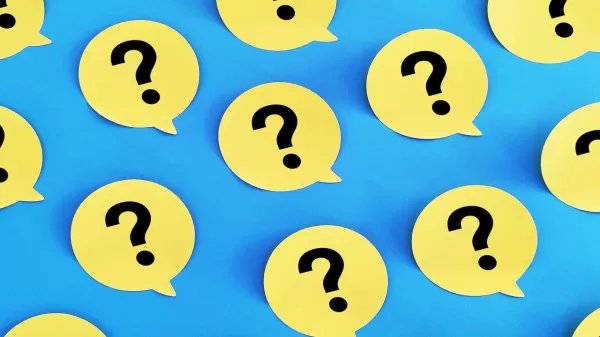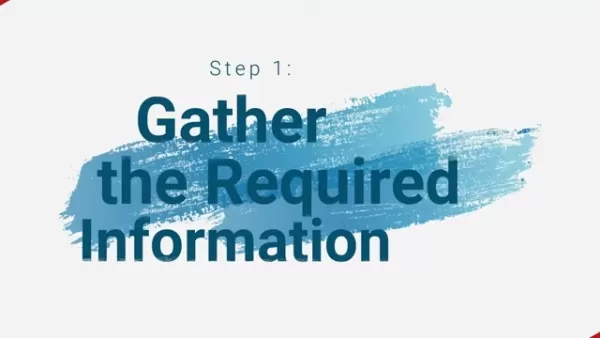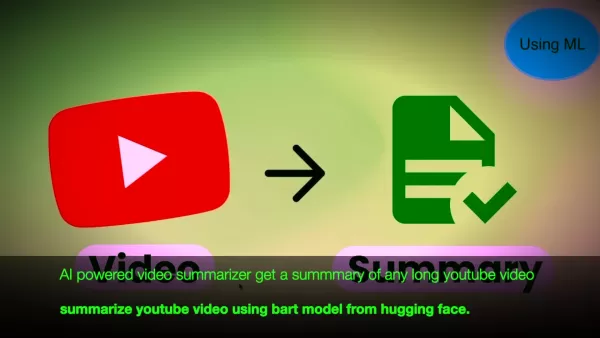6 ways AI can help you ace finals - for free (without plagiarizing)

Final exams can be a real headache for students, often requiring marathon study sessions and late nights. But here's some good news: AI can be a game-changer in helping you manage the stress and workload.
Since the rise of generative AI, it's often been viewed with suspicion in the education world, with concerns about its impact on academic integrity. Yet, AI isn't just a potential threat; it can be a powerful ally in your study routine, especially as these tools continue to evolve and improve.
Also: The tasks college students are using Claude AI for most
Most generative AI tools, like AI chatbots, are user-friendly and don't require any coding skills. Plus, many of the most useful features are available for free. If you're ready to let AI take some of the grunt work out of studying, here are the best ways to use it to organize your notes and ace your finals.
Quick Note: For any of the tips below that involve AI chatbots, feel free to use your preferred one. There are plenty of options out there, which we break down here.
Free AI Tools
Before diving in, you'll need to choose an AI chatbot. There are many free options available, such as ChatGPT, Claude, Gemini, Copilot, and Perplexity. While the free versions are great, premium plans offer higher limits and more advanced features, which can be particularly useful for studying. The good news is that students can often access these premium subscriptions for free.
Google is offering US students free access to Google's One AI Premium Plan just in time for finals. Students who sign up before June 30 will get free access through spring 2026. Similarly, OpenAI is providing US students with free access to ChatGPT Plus until the end of May. These subscriptions usually cost $20 a month, so it's a fantastic deal.
1. Essay Help
On top of cramming for exams, many professors also throw in end-of-semester papers that can make or break your grade. These often require a lot of research and synthesis, which is where AI can lend a hand.
You can use AI to support your writing by creating essay outlines, finding sources, and brainstorming ideas. For example, you might ask, "Help me create an outline for an essay about the rise and fall of The Wiggles."
Also: How ChatGPT (and other AI chatbots) can help you write an essay
AI chatbots can also co-edit your essays, going beyond basic spell-check to understand context, flow, and conciseness. Just copy and paste your text and ask the chatbot to edit it based on your needs.
Also: Why Canvas is ChatGPT's best productivity feature for power users
While it's tempting to have the essay written for you, remember that passing off AI-generated work as your own is plagiarism. AI detection tools are getting better at catching this, with some achieving 100% accuracy in ZDNET's tests.
2. Outline Your Notes
When preparing for exams, sifting through a semester's worth of notes to find the key points can be daunting. Instead of doing it manually, you can ask an AI chatbot to summarize or organize your notes for you.
Whether you're in humanities or STEM, you'll encounter a lot of reading—research papers, textbooks, slides, and dense articles full of jargon. You can feed this content to an AI chatbot and ask for a summary.
As a political science major, I used to have numerous Google Docs filled with lecture notes. If AI chatbots had been around, I could have pasted those notes into any chatbot and asked for concise summaries with higher-level insights.
Also: 35% of college students are using AI tools to help them with their studies
For this article, I tested this by copying my latest ZDNET article into Copilot and asking for a summary. Within seconds, it organized my article into six clear, accurate points that were easy to digest.
If your professor shares notes or outlines, you can also ask an AI chatbot to summarize those. Most chatbots, including Gemini, ChatGPT, Claude, and Copilot, support image and file uploads. While higher upload limits are often reserved for premium plans, students can now access some of these subscriptions for free.
3. Create Podcasts from Your Notes
Google's NotebookLM Audio Overviews feature lets you import your content and create a podcast with two AI hosts discussing your notes. This is perfect for maximizing study time, allowing you to listen to your material while doing other tasks like cooking or commuting.
These podcasts are especially helpful because they break down dense material into a conversational format with tangible examples and ad libs, making it more digestible. Google recently added the ability to create podcasts in over 50 languages, even if the original content is in a different language.
4. Dumbing Down Material
Sometimes, no matter how much you study, certain concepts just don't click. In those cases, you can use an AI chatbot to simplify complex terms into more understandable parts.
For example, you might ask the chatbot to explain a concept "as if I were a five-year-old." This approach breaks down the subject using everyday examples and adds context, making it much easier to grasp.
Also: The best free AI courses (and whether AI certificates are worth it)
I often use this feature in my work because it cuts through technical jargon and makes the material more accessible. You can choose any age or grade level you'd like for the explanation.
My favorite way to use AI voice assistants is to ask them to explain topics I don't understand. I love this because I can interrupt with follow-up questions and explain my confusion conversationally. When I'm confused, I often don't know where to start, so being able to ramble and go on tangents is incredibly helpful.
5. Visualize Your Notes
Many AI chatbots today are multimodal, meaning they can both accept and generate different types of inputs, including images. ChatGPT's recent update with GPT-4o image generation has significantly improved its image quality, allowing it to produce realistic images, text, charts, and other graphics.
Also: ChatGPT's new image generator shattered my expectations - and now it's free to try
If you're a visual learner, this feature can be invaluable. You can ask the chatbot to create visual representations of your study material, like graphs or diagrams. For example, I asked ChatGPT to create a labeled image of photosynthesis, and it delivered this:
When studying history, I used to draw timelines to help me remember key events. Now, you can ask ChatGPT to create those timelines for you. For instance, I asked, "Can you create a labeled timeline with the events leading up to the Revolutionary War?" While it simplifies things, it's a great way to visualize the material.
6. Test Your Knowledge
In grade school, I loved having my mom quiz me on my study material. Now, instead of relying on family or friends during late-night study sessions, you can use an AI chatbot to do the same.
Simply ask the chatbot, "Can you test me on my exam material?" It will then generate questions based on the topic you provide, as shown below.
After you answer, the chatbot can correct you, offer insights into your mistakes, and even suggest online resources to help you better understand the material.
If you want to take this a step further, use a chatbot with source reading capabilities or paste your notes in and ask it to generate questions specific to your PDF or notes.
Also: AI agents arrive in US classrooms
You can also ask the chatbot to create flashcards based on your material. It will tell you exactly what to put on the front and back of the cards, saving you time and letting you focus on using them effectively.
Good luck with your finals!
*Want more stories about AI? Sign up for Innovation, our weekly newsletter.*
Related article
 AI-Powered Cover Letters: Expert Guide for Journal Submissions
In today's competitive academic publishing environment, crafting an effective cover letter can make the crucial difference in your manuscript's acceptance. Discover how AI-powered tools like ChatGPT can streamline this essential task, helping you cre
AI-Powered Cover Letters: Expert Guide for Journal Submissions
In today's competitive academic publishing environment, crafting an effective cover letter can make the crucial difference in your manuscript's acceptance. Discover how AI-powered tools like ChatGPT can streamline this essential task, helping you cre
 US to Sanction Foreign Officials Over Social Media Regulations
US Takes Stand Against Global Digital Content Regulations
The State Department issued a sharp diplomatic rebuke this week targeting European digital governance policies, signaling escalating tensions over control of online platforms. Secretary Marco
US to Sanction Foreign Officials Over Social Media Regulations
US Takes Stand Against Global Digital Content Regulations
The State Department issued a sharp diplomatic rebuke this week targeting European digital governance policies, signaling escalating tensions over control of online platforms. Secretary Marco
 Ultimate Guide to AI-Powered YouTube Video Summarizers
In our information-rich digital landscape, AI-powered YouTube video summarizers have become indispensable for efficient content consumption. This in-depth guide explores how to build a sophisticated summarization tool using cutting-edge NLP technolog
Comments (3)
0/200
Ultimate Guide to AI-Powered YouTube Video Summarizers
In our information-rich digital landscape, AI-powered YouTube video summarizers have become indispensable for efficient content consumption. This in-depth guide explores how to build a sophisticated summarization tool using cutting-edge NLP technolog
Comments (3)
0/200
![HaroldLopez]() HaroldLopez
HaroldLopez
 September 9, 2025 at 4:30:39 AM EDT
September 9, 2025 at 4:30:39 AM EDT
AI로 컨닝하지 않고 시험 준비하는 법이 궁금했어요! 이 기사는 진짜 유용한 팁 같아요. 특히 요약 기능으로 긴 내용을 쉽게 정리할 수 있는 게 좋네요. 다음 시험 기간에 꼭 써봐야겠어요 😊


 0
0
![JohnYoung]() JohnYoung
JohnYoung
 August 15, 2025 at 9:01:00 PM EDT
August 15, 2025 at 9:01:00 PM EDT
AI for finals sounds like a lifesaver! 😅 I love how it can help organize study notes without breaking a sweat. But, like, isn’t it wild how fast tech is changing education?


 0
0
![BillyMartinez]() BillyMartinez
BillyMartinez
 August 13, 2025 at 3:01:01 PM EDT
August 13, 2025 at 3:01:01 PM EDT
AI for finals sounds like a lifesaver! I’m curious how it helps with stress—does it quiz you or just organize notes? Gotta try this! 😎


 0
0

Final exams can be a real headache for students, often requiring marathon study sessions and late nights. But here's some good news: AI can be a game-changer in helping you manage the stress and workload.
Since the rise of generative AI, it's often been viewed with suspicion in the education world, with concerns about its impact on academic integrity. Yet, AI isn't just a potential threat; it can be a powerful ally in your study routine, especially as these tools continue to evolve and improve.
Also: The tasks college students are using Claude AI for most
Most generative AI tools, like AI chatbots, are user-friendly and don't require any coding skills. Plus, many of the most useful features are available for free. If you're ready to let AI take some of the grunt work out of studying, here are the best ways to use it to organize your notes and ace your finals.
Quick Note: For any of the tips below that involve AI chatbots, feel free to use your preferred one. There are plenty of options out there, which we break down here.
Free AI Tools
Before diving in, you'll need to choose an AI chatbot. There are many free options available, such as ChatGPT, Claude, Gemini, Copilot, and Perplexity. While the free versions are great, premium plans offer higher limits and more advanced features, which can be particularly useful for studying. The good news is that students can often access these premium subscriptions for free.
Google is offering US students free access to Google's One AI Premium Plan just in time for finals. Students who sign up before June 30 will get free access through spring 2026. Similarly, OpenAI is providing US students with free access to ChatGPT Plus until the end of May. These subscriptions usually cost $20 a month, so it's a fantastic deal.
1. Essay Help
On top of cramming for exams, many professors also throw in end-of-semester papers that can make or break your grade. These often require a lot of research and synthesis, which is where AI can lend a hand.
You can use AI to support your writing by creating essay outlines, finding sources, and brainstorming ideas. For example, you might ask, "Help me create an outline for an essay about the rise and fall of The Wiggles."
Also: How ChatGPT (and other AI chatbots) can help you write an essay
AI chatbots can also co-edit your essays, going beyond basic spell-check to understand context, flow, and conciseness. Just copy and paste your text and ask the chatbot to edit it based on your needs.
Also: Why Canvas is ChatGPT's best productivity feature for power users
While it's tempting to have the essay written for you, remember that passing off AI-generated work as your own is plagiarism. AI detection tools are getting better at catching this, with some achieving 100% accuracy in ZDNET's tests.
2. Outline Your Notes
When preparing for exams, sifting through a semester's worth of notes to find the key points can be daunting. Instead of doing it manually, you can ask an AI chatbot to summarize or organize your notes for you.
Whether you're in humanities or STEM, you'll encounter a lot of reading—research papers, textbooks, slides, and dense articles full of jargon. You can feed this content to an AI chatbot and ask for a summary.
As a political science major, I used to have numerous Google Docs filled with lecture notes. If AI chatbots had been around, I could have pasted those notes into any chatbot and asked for concise summaries with higher-level insights.
Also: 35% of college students are using AI tools to help them with their studies
For this article, I tested this by copying my latest ZDNET article into Copilot and asking for a summary. Within seconds, it organized my article into six clear, accurate points that were easy to digest.
If your professor shares notes or outlines, you can also ask an AI chatbot to summarize those. Most chatbots, including Gemini, ChatGPT, Claude, and Copilot, support image and file uploads. While higher upload limits are often reserved for premium plans, students can now access some of these subscriptions for free.
3. Create Podcasts from Your Notes
Google's NotebookLM Audio Overviews feature lets you import your content and create a podcast with two AI hosts discussing your notes. This is perfect for maximizing study time, allowing you to listen to your material while doing other tasks like cooking or commuting.
These podcasts are especially helpful because they break down dense material into a conversational format with tangible examples and ad libs, making it more digestible. Google recently added the ability to create podcasts in over 50 languages, even if the original content is in a different language.
4. Dumbing Down Material
Sometimes, no matter how much you study, certain concepts just don't click. In those cases, you can use an AI chatbot to simplify complex terms into more understandable parts.
For example, you might ask the chatbot to explain a concept "as if I were a five-year-old." This approach breaks down the subject using everyday examples and adds context, making it much easier to grasp.
Also: The best free AI courses (and whether AI certificates are worth it)
I often use this feature in my work because it cuts through technical jargon and makes the material more accessible. You can choose any age or grade level you'd like for the explanation.
My favorite way to use AI voice assistants is to ask them to explain topics I don't understand. I love this because I can interrupt with follow-up questions and explain my confusion conversationally. When I'm confused, I often don't know where to start, so being able to ramble and go on tangents is incredibly helpful.
5. Visualize Your Notes
Many AI chatbots today are multimodal, meaning they can both accept and generate different types of inputs, including images. ChatGPT's recent update with GPT-4o image generation has significantly improved its image quality, allowing it to produce realistic images, text, charts, and other graphics.
Also: ChatGPT's new image generator shattered my expectations - and now it's free to try
If you're a visual learner, this feature can be invaluable. You can ask the chatbot to create visual representations of your study material, like graphs or diagrams. For example, I asked ChatGPT to create a labeled image of photosynthesis, and it delivered this:
When studying history, I used to draw timelines to help me remember key events. Now, you can ask ChatGPT to create those timelines for you. For instance, I asked, "Can you create a labeled timeline with the events leading up to the Revolutionary War?" While it simplifies things, it's a great way to visualize the material.
6. Test Your Knowledge
In grade school, I loved having my mom quiz me on my study material. Now, instead of relying on family or friends during late-night study sessions, you can use an AI chatbot to do the same.
Simply ask the chatbot, "Can you test me on my exam material?" It will then generate questions based on the topic you provide, as shown below.
After you answer, the chatbot can correct you, offer insights into your mistakes, and even suggest online resources to help you better understand the material.
If you want to take this a step further, use a chatbot with source reading capabilities or paste your notes in and ask it to generate questions specific to your PDF or notes.
Also: AI agents arrive in US classrooms
You can also ask the chatbot to create flashcards based on your material. It will tell you exactly what to put on the front and back of the cards, saving you time and letting you focus on using them effectively.
Good luck with your finals!
*Want more stories about AI? Sign up for Innovation, our weekly newsletter.*
 AI-Powered Cover Letters: Expert Guide for Journal Submissions
In today's competitive academic publishing environment, crafting an effective cover letter can make the crucial difference in your manuscript's acceptance. Discover how AI-powered tools like ChatGPT can streamline this essential task, helping you cre
AI-Powered Cover Letters: Expert Guide for Journal Submissions
In today's competitive academic publishing environment, crafting an effective cover letter can make the crucial difference in your manuscript's acceptance. Discover how AI-powered tools like ChatGPT can streamline this essential task, helping you cre
 US to Sanction Foreign Officials Over Social Media Regulations
US Takes Stand Against Global Digital Content Regulations
The State Department issued a sharp diplomatic rebuke this week targeting European digital governance policies, signaling escalating tensions over control of online platforms. Secretary Marco
US to Sanction Foreign Officials Over Social Media Regulations
US Takes Stand Against Global Digital Content Regulations
The State Department issued a sharp diplomatic rebuke this week targeting European digital governance policies, signaling escalating tensions over control of online platforms. Secretary Marco
 Ultimate Guide to AI-Powered YouTube Video Summarizers
In our information-rich digital landscape, AI-powered YouTube video summarizers have become indispensable for efficient content consumption. This in-depth guide explores how to build a sophisticated summarization tool using cutting-edge NLP technolog
Ultimate Guide to AI-Powered YouTube Video Summarizers
In our information-rich digital landscape, AI-powered YouTube video summarizers have become indispensable for efficient content consumption. This in-depth guide explores how to build a sophisticated summarization tool using cutting-edge NLP technolog
 September 9, 2025 at 4:30:39 AM EDT
September 9, 2025 at 4:30:39 AM EDT
AI로 컨닝하지 않고 시험 준비하는 법이 궁금했어요! 이 기사는 진짜 유용한 팁 같아요. 특히 요약 기능으로 긴 내용을 쉽게 정리할 수 있는 게 좋네요. 다음 시험 기간에 꼭 써봐야겠어요 😊


 0
0
 August 15, 2025 at 9:01:00 PM EDT
August 15, 2025 at 9:01:00 PM EDT
AI for finals sounds like a lifesaver! 😅 I love how it can help organize study notes without breaking a sweat. But, like, isn’t it wild how fast tech is changing education?


 0
0
 August 13, 2025 at 3:01:01 PM EDT
August 13, 2025 at 3:01:01 PM EDT
AI for finals sounds like a lifesaver! I’m curious how it helps with stress—does it quiz you or just organize notes? Gotta try this! 😎


 0
0





























